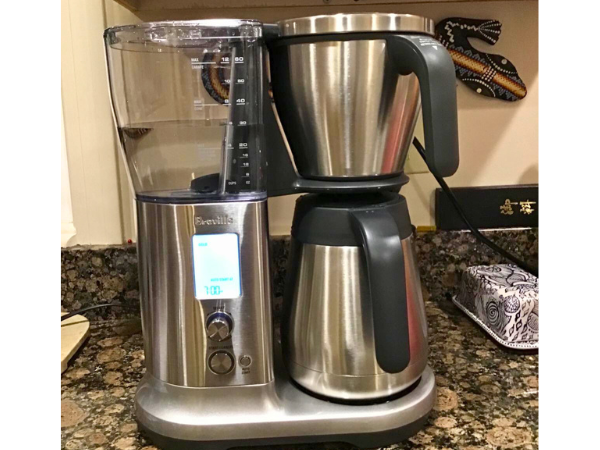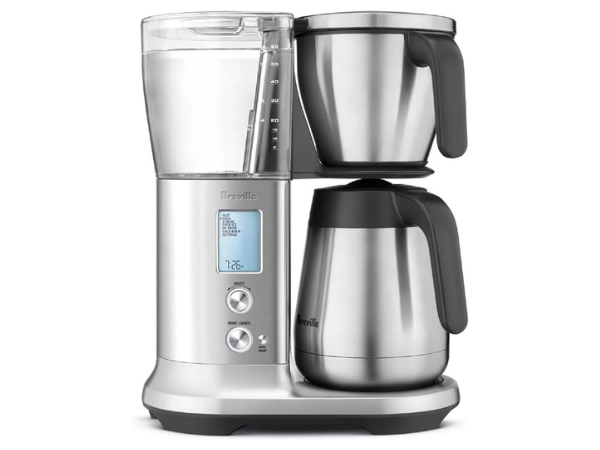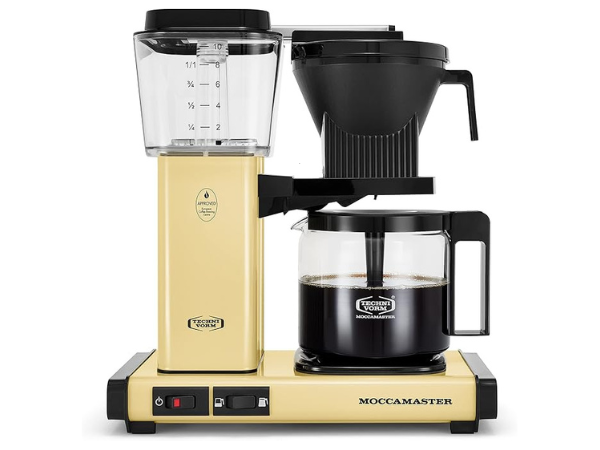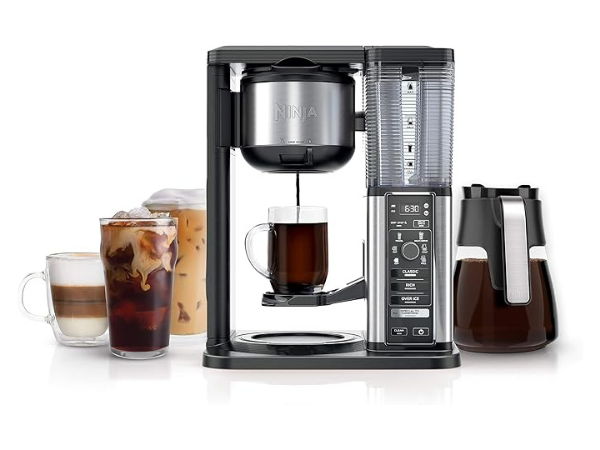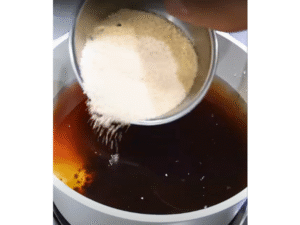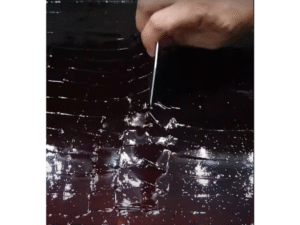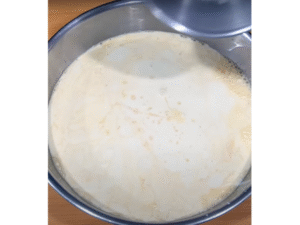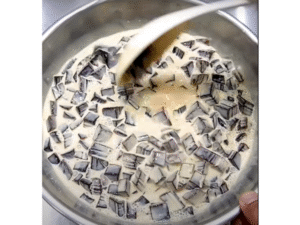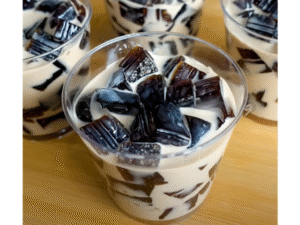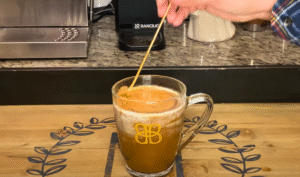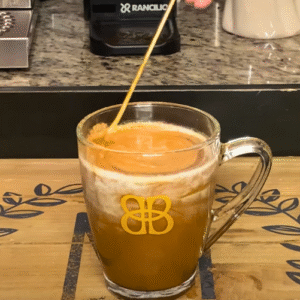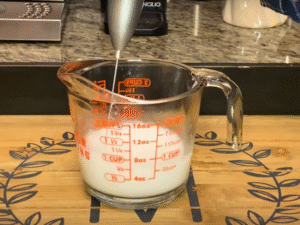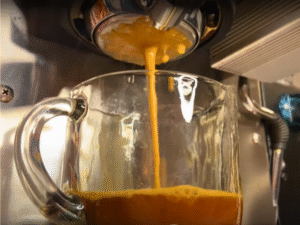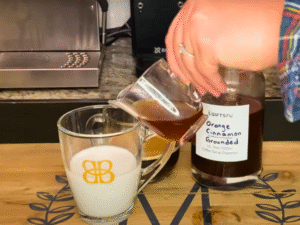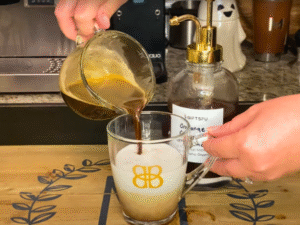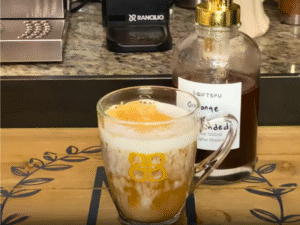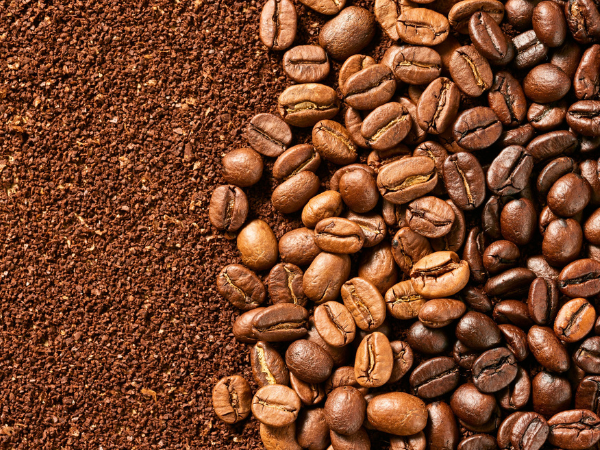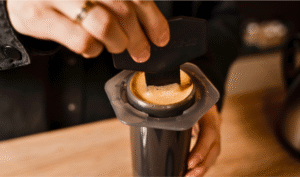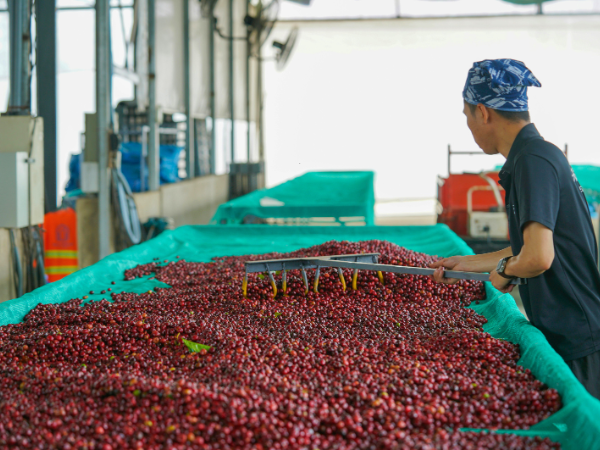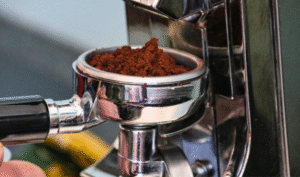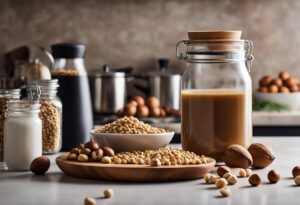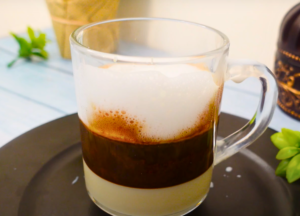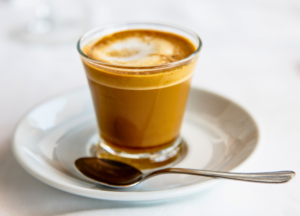These grinders are designed to deliver consistent results while keeping the volume down—so you can enjoy the ritual of grinding without the harsh buzz.
In this guide, we’ve rounded up the top 3 quiet coffee grinders of the year. They combine thoughtful engineering, reliable function, and a gentler sound profile—perfect for those who value a calm start to the day.
The Quest For Quiet Coffee
The quest for quiet coffee is important for many coffee lovers. A peaceful morning can set the tone for the entire day. For those who enjoy fresh coffee, the noise from traditional grinders can be disruptive.
Why A Quiet Grinder Matters
A quiet coffee grinder can change your morning routine. It offers several benefits that enhance your coffee experience. Here are some key reasons why a quiet grinder matters:
- Peaceful Mornings: Avoid disturbing household members or neighbors with loud grinding noise.
- Enhanced Coffee Ritual: A more serene experience to start your day.
- Flavor Preservation: Often, quieter grinders operate at lower RPMs, reducing heat and protecting delicate bean flavors.
Noise can create stress. A loud grinder can wake up others in your home. This can lead to frustration, especially during early mornings. A quiet grinder allows you to enjoy your coffee without worrying about waking anyone up.
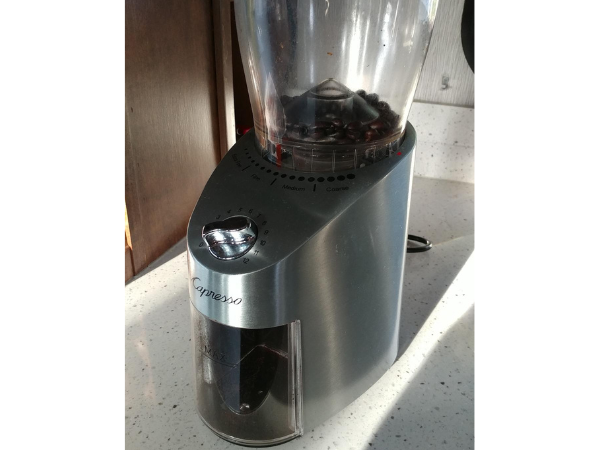
What Defines A “Quiet” Grinder?
A quiet grinder is defined by its design and operation. Several factors contribute to its noise level. Understanding these factors can help you choose the right grinder:
| Factor | Description |
|---|---|
| Motor Type | Brushless motors tend to be quieter than traditional motors. |
| Grinding Mechanism | Burr grinders usually produce less noise than blade grinders. |
| Build Quality | High-quality materials can help reduce vibrations and noise. |
Look for grinders that feature a low RPM (revolutions per minute) design. Lower RPMs often mean quieter operation. These grinders also help in flavor preservation. They minimize heat generated during grinding. This keeps the delicate flavors of the beans intact.
Another important feature is sound insulation. Some grinders have special materials that absorb sound. This makes them quieter during use. Always check user reviews.
1. Eureka Mignon Silenzio (Conical Burr Coffee Grinder)
The Eureka Mignon Silenzio stands out as one of the top quiet coffee grinders of the year. This conical burr grinder offers both quality and peace during your coffee-making process. Designed for home baristas, it combines style with functionality.
Engineered For Silence
The Eureka Mignon Silenzio is truly engineered for silence. Its design focuses on reducing noise, making it perfect for early mornings or quiet evenings. Here are some key features:
- Dedicated Sound Insulation: Designed with a robust, sound-insulated casing to absorb motor noise.
- Anti-Vibration Solutions: Internal components are mounted to minimize resonance and dampen sound.
- “Silenzio” in Name: This explicitly highlights its primary design goal of quiet operation.
This grinder operates quietly, allowing you to enjoy your coffee ritual without disturbance. The sound level is significantly lower than many other grinders.
Its compact design also adds to its appeal. It fits well in most kitchen spaces. You can have a high-quality grinder without compromising on your kitchen’s aesthetics.
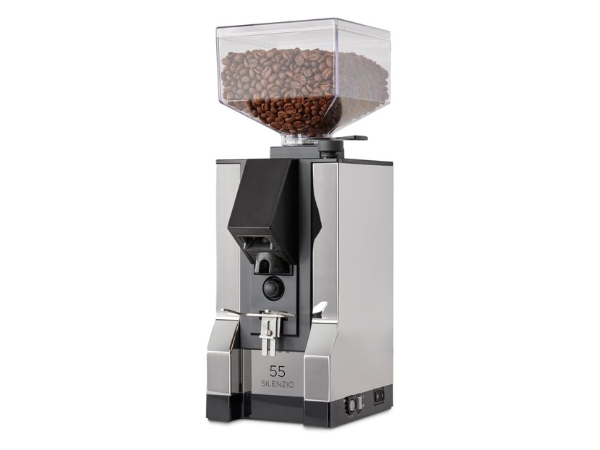
Precision & Performance
When it comes to precision, the Eureka Mignon Silenzio excels. It features high-quality flat burrs that provide consistent, uniform grinds. This is ideal for espresso and various brew methods. Here are some essential performance aspects:
- Stepless Micrometric Adjustment: Allows for incredibly precise grind size control.
- Compact Italian Craftsmanship: A durable, professional-grade grinder scaled for home use.
Users appreciate how easy it is to adjust the grind size. From fine to coarse, the adjustments are smooth and quick. This means you can switch between brewing methods without hassle.
The grinder’s performance is reliable, providing quality results every time. Whether you are making espresso or French press, the Mignon Silenzio meets your needs. Its design supports consistent results, which is crucial for coffee lovers.
2. Capresso Infinity Conical Burr Grinder
The Capresso Infinity Conical Burr Grinder stands out as one of the top choices for quiet coffee grinding. It combines performance and peace, making it ideal for morning routines. This grinder operates at a low RPM, ensuring a quiet experience without sacrificing quality.
Quiet Operation At A Slower Speed
The Capresso Infinity Conical Burr Grinder excels in quiet operation. It uses low RPM grinding to minimize noise. Operating at approximately 450 RPM, this grinder produces less heat and sound. The slower speed allows for a more peaceful morning coffee experience.
Key features of the quiet operation include:
- Reduced Friction: The slow rotation creates less friction during grinding. This contributes to its quieter performance.
- Excellent Value: The grinder offers a great balance of quiet operation and quality burr grinding at an accessible price point.
The design focuses on providing a calm environment. Users can enjoy their coffee without disturbances. This feature makes the Capresso Infinity perfect for early risers or anyone who values a peaceful space.
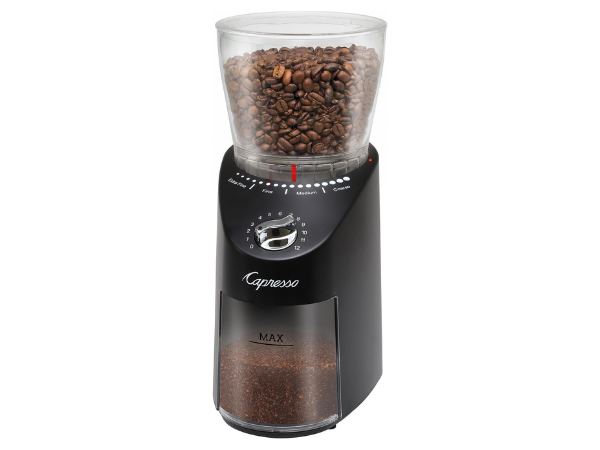
Consistent & Versatile Grinding
The Capresso Infinity is not just quiet; it also delivers consistent and versatile grinding. It features solid steel conical burrs that provide uniform grounds. This is crucial for achieving the perfect brew, whether it’s espresso or French press.
Here are some notable aspects of its grinding capabilities:
- 16 Grind Settings: The grinder offers ample variety for different brewing methods, such as espresso, pour-over, drip, and French press.
- Safety Lock Feature: This ensures the grinder only operates when the hopper is securely in place, adding an extra layer of safety.
This versatility makes it a great choice for coffee lovers. The ability to adjust grind size allows users to experiment with different brewing styles. Whether you prefer a fine grind for espresso or a coarse grind for French press, the Capresso Infinity has you covered.
3. Fellow Ode Brew Grinder (Gen 2)
The Fellow Ode Brew Grinder (Gen 2) stands out in the world of quiet coffee grinders. This grinder is designed to provide a peaceful grinding experience. It is ideal for coffee lovers who want to enjoy their brew without the noise.
Modern Design With Noise Reduction
The Fellow Ode Brew Grinder (Gen 2) is not just a beautiful piece. It incorporates several features that make it quiet. The design focuses on noise reduction, making it perfect for home use.
- Acoustic Dampening: Features internal design elements specifically aimed at absorbing sound.
- Precise Motor Control: A sophisticated motor helps reduce overall operational noise.
- Heavy-Duty Build: Its substantial weight and solid construction help to absorb vibrations and minimize sound.
The grinder’s modern aesthetics blend well with any kitchen decor. Its heavy-duty build adds durability while keeping noise levels low. Users can enjoy a peaceful morning routine without the loud grinding sounds.
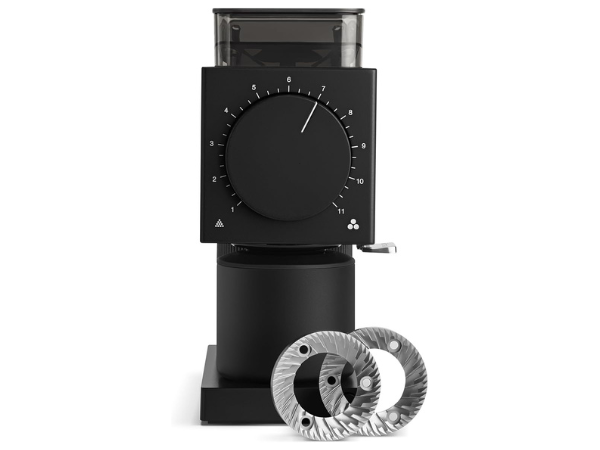
Optimized For Brewed Coffee
The Fellow Ode Brew Grinder (Gen 2) is specially designed for brewed coffee. It delivers consistent results for various brewing methods. Coffee lovers will appreciate the attention to detail.
- Large Flat Burrs (64mm): Gen 2 burrs provide exceptional grind consistency for pour-over, drip, and French press.
- Single-Dose Workflow: Designed for grinding beans for one brew at a time, enhancing freshness.
- Anti-Static Technology: Minimizes messy ground retention and static cling.
This grinder ensures each cup of coffee tastes fresh and rich. The large flat burrs grind beans evenly. This feature is crucial for achieving the best flavors from your coffee.
The single-dose design allows you to grind just enough beans for one brew. It helps in keeping the coffee fresh. The anti-static technology makes it easy to clean. There’s less mess after grinding.
Key Considerations When Choosing A Quiet Grinder
Consider key factors before making your choice. Focus on grind settings, burr types, and noise levels. These aspects greatly affect your coffee experience.
Understanding Grind Settings & Burrs
Grind settings play a crucial role in brewing the perfect cup of coffee. Different brewing methods require different grind sizes. A good grinder offers a range of settings. Here are the common grind sizes:
- Coarse: Best for French press and cold brew.
- Medium: Ideal for drip coffee makers.
- Fine: Needed for espresso machines.
- Extra Fine: Used for Turkish coffee.
Burr grinders are preferred over blade grinders. They provide consistent grind size. Two types of burrs exist:
- Flat burrs: Offer uniform grinding and are easy to clean.
- Conical burrs: More forgiving of bean size and shape.
When choosing a grinder, pay attention to the number of settings. A wider range allows for better customization. Look for a model that fits your brewing method. Some grinders come with a digital display. This feature shows the selected grind size and time.
Beyond Noise Levels
Noise levels are a primary concern for many buyers. However, other factors also matter. Consider the grinder’s material and design. Quality construction leads to better performance and durability. Look for grinders made from:
- Stainless Steel: Strong and resistant to rust.
- Plastic: Lightweight but may wear out faster.
Check the grinder’s capacity as well. A larger capacity means fewer refills. This is useful for those who brew coffee for multiple people. Also, consider ease of cleaning. A grinder that is easy to clean will save time and effort. Look for removable parts and a brush for cleaning.
Finally, consider user reviews. These can provide insight into the grinder’s performance and reliability. Look for feedback on durability and grind consistency. A good product will have mostly positive reviews.



